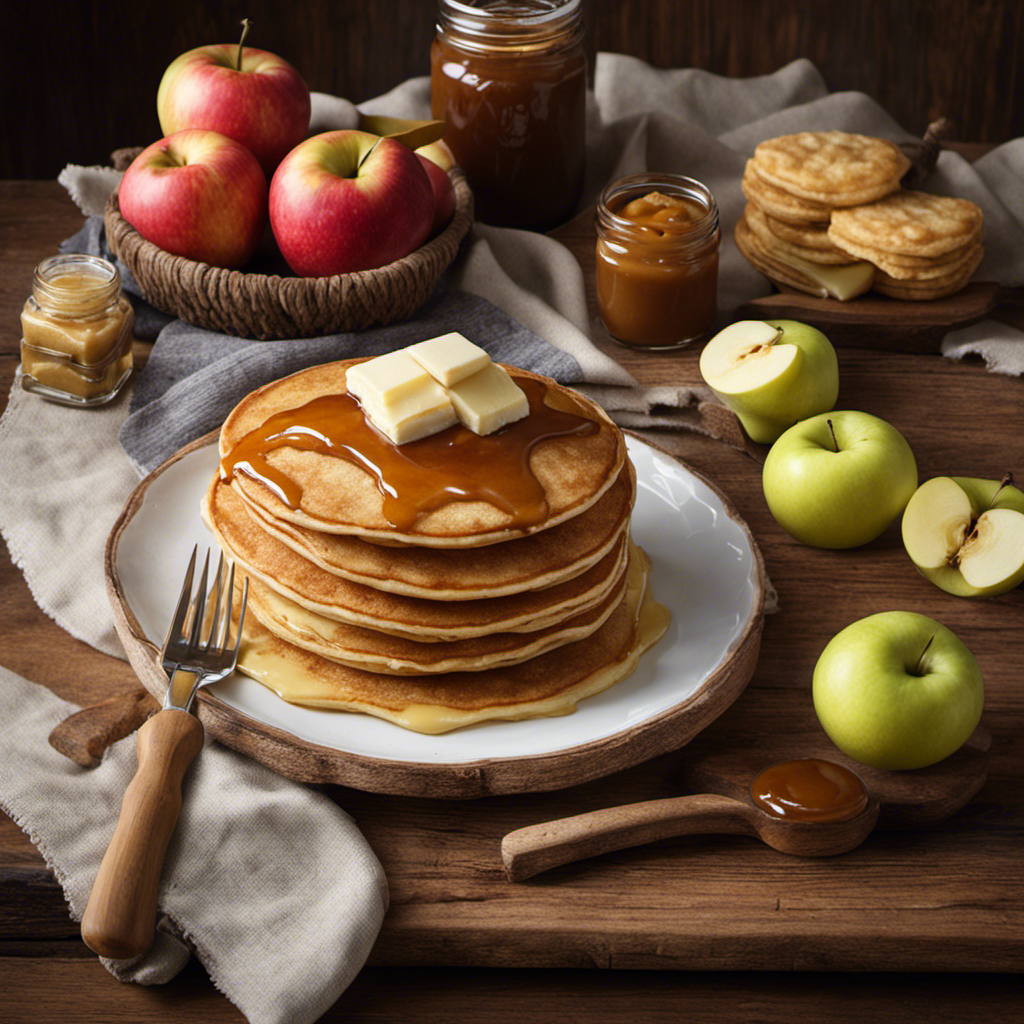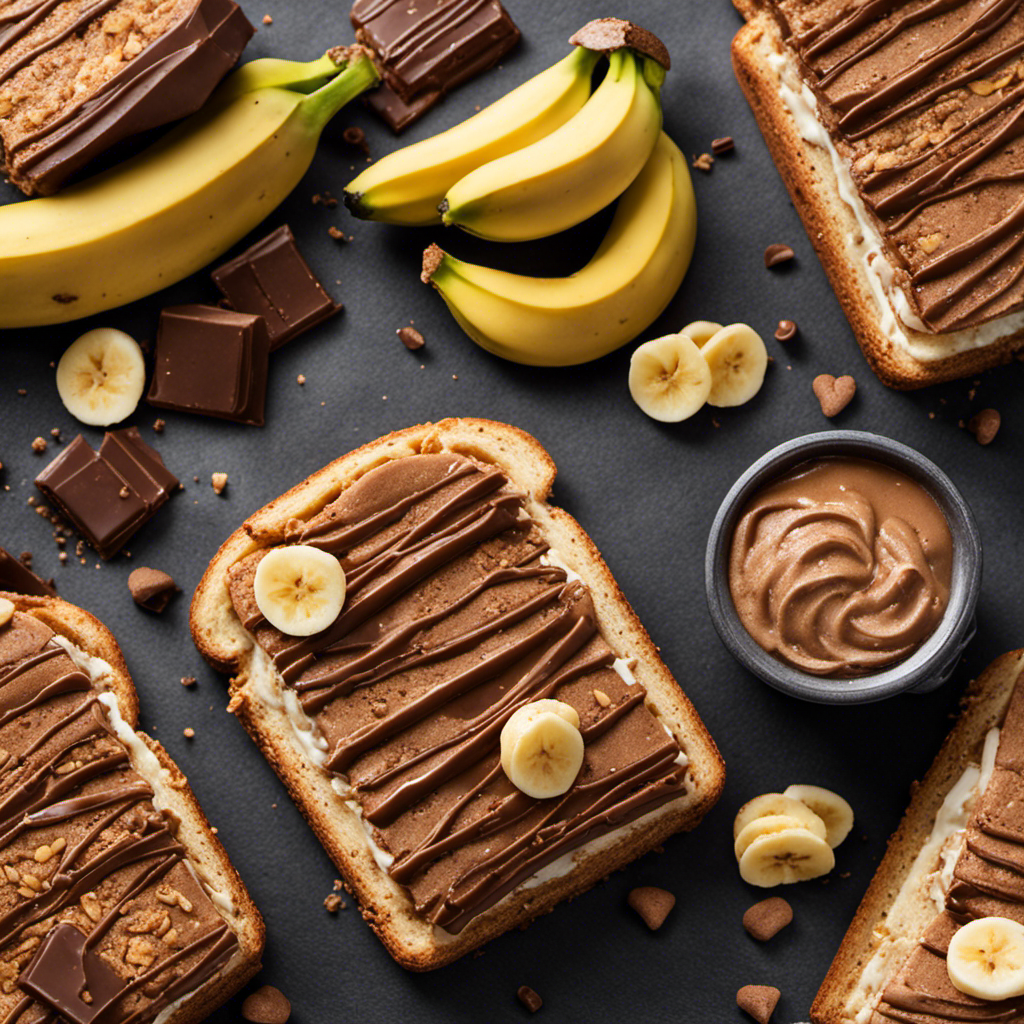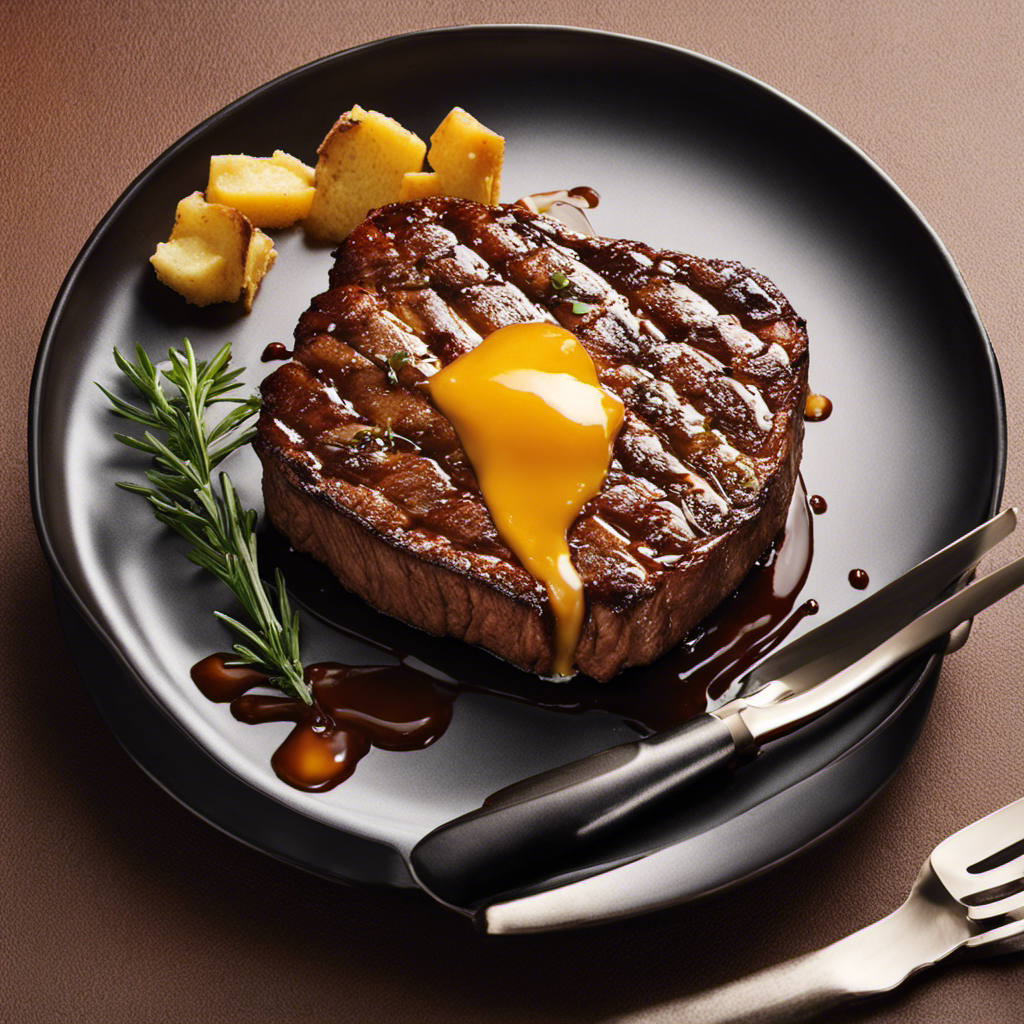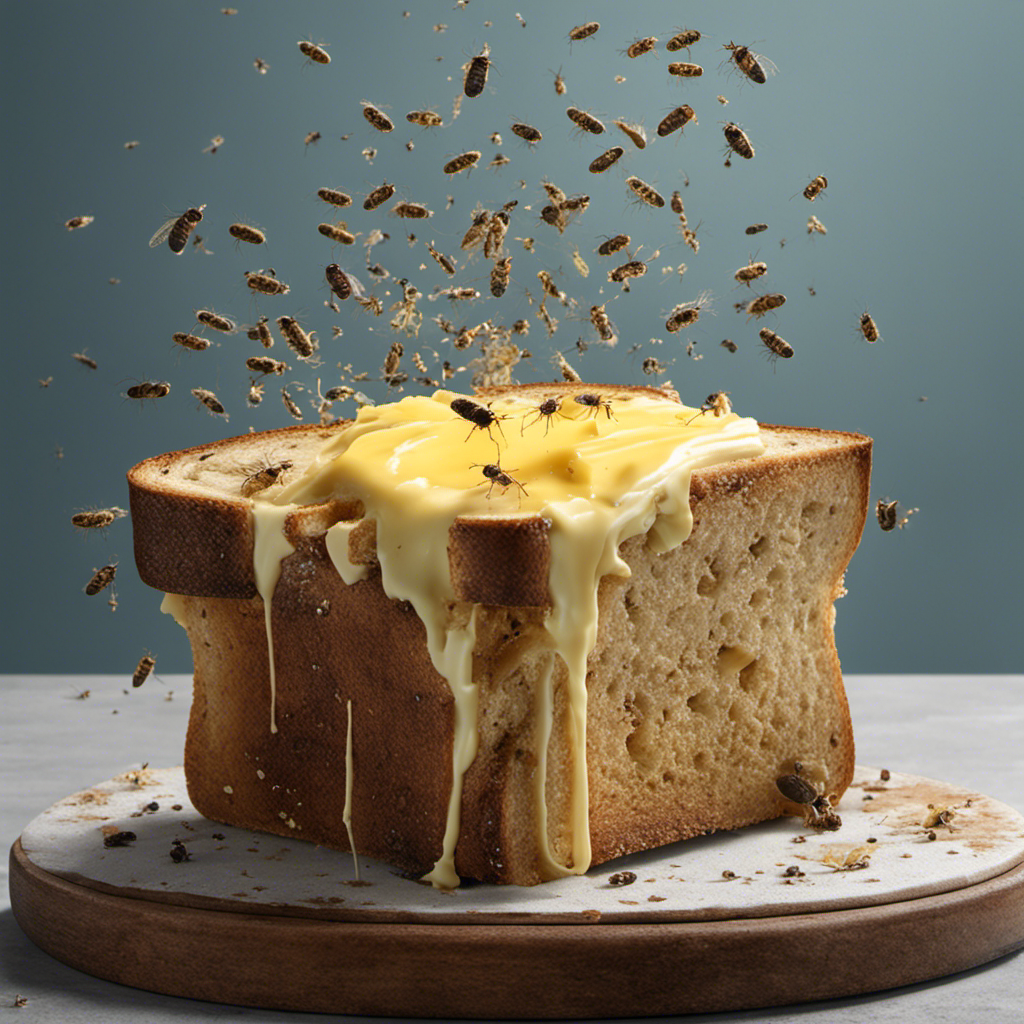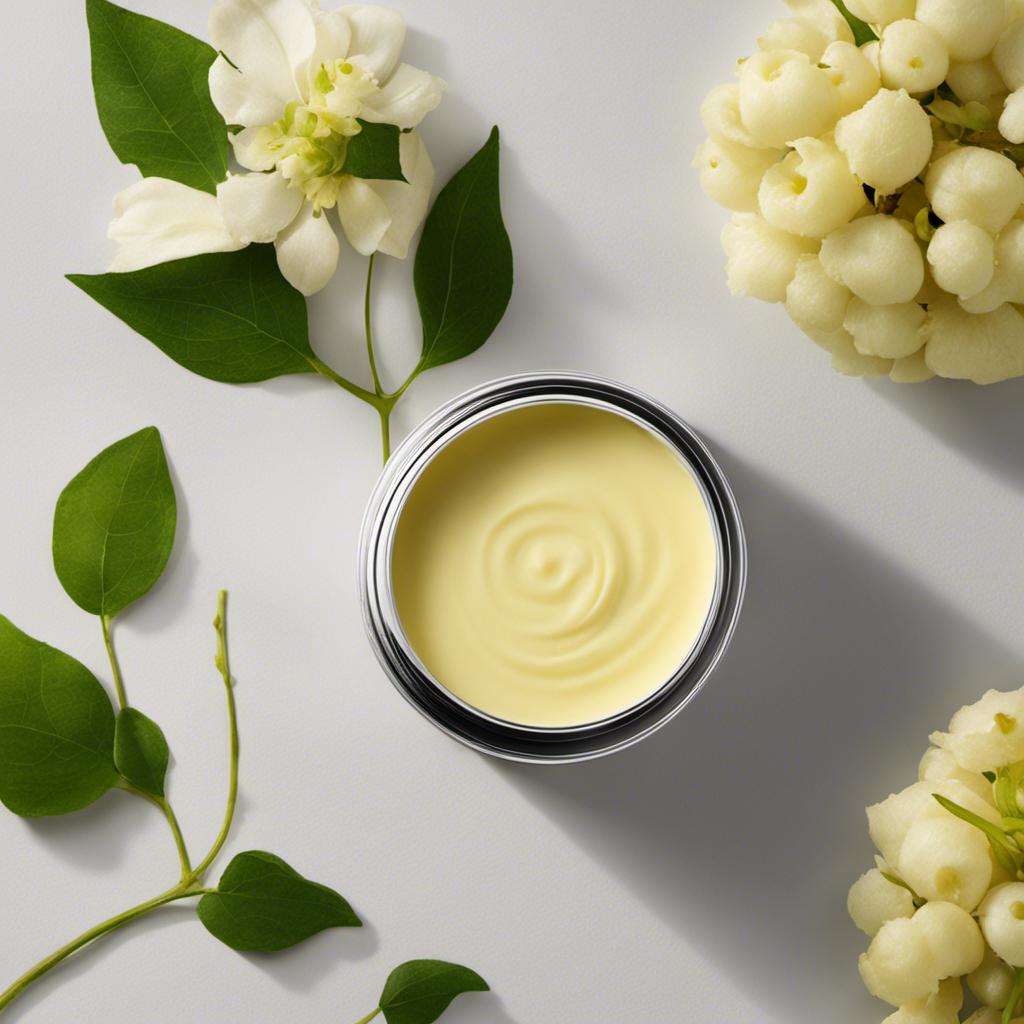Did you know that apple butter isn’t just for spreading on toast? There are countless delicious ways to enjoy this versatile sauce.
From adding a dollop to your morning bowl of yogurt and granola, to slathering it on a warm biscuit or scone, the possibilities are endless.
In this article, I will guide you through the delectable world of apple butter and share some unexpected pairings that will surely tantalize your taste buds.
So, get ready to elevate your meals and snacks with the sweet and savory flavors of apple butter.
Key Takeaways
- Apple butter can be enjoyed on a variety of breakfast foods, such as toast, bagels, pancakes, waffles, yogurt, granola, oatmeal, and porridge.
- It pairs exceptionally well with biscuits and scones, enhancing their flavor and creating a heavenly combination of warm pastries and tangy apple butter.
- Apple butter is a versatile accompaniment for pork and ham dishes, whether it’s used in sandwiches, soups, stir-fries, or served with mashed potatoes and roasted vegetables.
- When paired with cheese and crackers, apple butter adds a new level of flavor, making it a perfect addition to a cheese and charcuterie board.
Toast and Bagels
You can spread apple butter on toast and bagels for a delicious breakfast. Apple butter is a smooth and sweet spread made from cooked apples and spices like cinnamon and nutmeg. It has a rich and velvety texture that spreads easily on warm toast or chewy bagels.
One of my favorite apple butter recipes is homemade apple butter, where you can control the sweetness and spices to your liking. To make it, simply simmer peeled and sliced apples with sugar, spices, and a splash of apple cider until the mixture thickens and becomes fragrant. The result is a flavorful and comforting spread that adds a burst of apple goodness to your morning meal.
Pancakes and Waffles
For a delicious twist on your breakfast, try spreading some of this homemade apple butter on your pancakes or waffles. The sweet and tangy flavor of the apple butter pairs perfectly with the fluffy texture of the pancakes or the crispiness of the waffles. It’s a delightful combination that will make your mornings even more enjoyable.
Now, let’s have a discussion about whether you prefer your pancakes and waffles to be savory or sweet. Personally, I lean towards the sweet side, as I love the contrast between the sweetness of the apple butter and the slightly salty taste of the pancakes or waffles. However, some people may prefer a savory twist by adding bacon or cheese to their pancakes or waffles.
When it comes to toppings or fillings, the possibilities are endless. You can simply spread a generous amount of apple butter on top, or you can get creative and add some sliced bananas, chopped nuts, or a dollop of whipped cream. If you prefer fillings, you can sandwich the apple butter between two pancakes or waffles for a delightful surprise in every bite.
To summarize, whether you prefer your pancakes and waffles to be savory or sweet, and whether you like toppings or fillings, adding homemade apple butter to your breakfast will take it to a whole new level of deliciousness. So go ahead, indulge yourself and enjoy this delightful combination.
| Savory | Sweet |
|---|---|
| Bacon | Bananas |
| Cheese | Chopped nuts |
| Eggs | Whipped cream |
| Avocado | Maple syrup |
Yogurt and Granola
When it comes to breakfast options, yogurt and granola make for a delicious and nutritious combination. The creamy texture of yogurt pairs perfectly with the crunchy goodness of granola, creating a satisfying and filling meal to start your day.
Here are five mouthwatering ways to enjoy yogurt and granola:
-
A parfait: Layer yogurt, granola, and your favorite fruits in a glass for a visually appealing and tasty treat.
-
Smoothie bowl: Blend yogurt, frozen fruits, and a dollop of apple butter for a refreshing and nutritious breakfast.
-
Greek yogurt pancakes: Add granola to your pancake batter for an extra crunch and top with a drizzle of apple butter.
-
Granola bars: Mix granola, yogurt, and apple butter together, press into a pan, and refrigerate for a homemade snack on the go.
-
Apple butter muffins: Add a spoonful of apple butter to your muffin batter for a burst of flavor and moisture.
With these creative ideas, you can enjoy the goodness of yogurt and granola in new and exciting ways, incorporating the deliciousness of apple butter.
Oatmeal and Porridge
So, when it comes to breakfast choices, there are a few classics that always seem to be in the mix: pancakes or waffles, toast or bagels, yogurt or granola.
Each option brings its own unique flavors and textures to the table. Personally, I can never resist the fluffy goodness of pancakes, the crispy edges of toast, or the creamy combination of yogurt and granola.
Let’s dive into each one and discuss the pros and cons of these breakfast staples.
Pancakes or Waffles
You can spread apple butter on pancakes or waffles for a delicious breakfast treat. When it comes to pancakes vs. waffles, both options are equally tempting.
Pancakes are light and fluffy, while waffles have a crispy texture that adds a delightful crunch. As you imagine indulging in this mouthwatering combination, picture the following toppings enhancing the flavors:
- Freshly sliced bananas: Their natural sweetness complements the rich apple butter.
- Chopped pecans: The nutty crunch adds a delightful texture contrast.
- A drizzle of maple syrup: The sweet syrup seeping into every crevice.
- Whipped cream: A creamy cloud that melts into the warm apple butter.
- A sprinkle of cinnamon: The warm spice that enhances the overall taste experience.
Whether you choose pancakes or waffles, these toppings will take your breakfast to a whole new level of deliciousness. So go ahead, treat yourself to a stack of pancakes or a plate of crispy waffles topped with luscious apple butter and enjoy a breakfast that is both comforting and indulgent.
Toast or Bagels
If you’re craving a savory breakfast, toasted bagels with cream cheese are a delicious choice. But if you want to take it up a notch, try spreading some apple butter on your bagel before adding the cream cheese.
The combination of the sweet apple butter and creamy cream cheese is simply divine. The warmth of the toasted bagel enhances the flavors even more, creating a mouthwatering breakfast treat.
And if bagels aren’t your thing, you can also enjoy apple butter with muffins. The rich, fruity spread adds a burst of flavor to any muffin, making it the perfect accompaniment for your morning coffee or tea.
Now that we’ve explored the options of toast, bagels, and muffins, let’s move on to another delicious pairing: yogurt or granola.
Yogurt or Granola
For a satisfying breakfast, try mixing yogurt and granola together for a delicious and crunchy combination. It’s a simple and nutritious way to start your day.
Here are some ideas to inspire you:
- A dollop of apple butter on top adds a sweet and tangy twist.
- Freshly sliced strawberries and a drizzle of honey create a burst of fruity flavors.
- Chopped almonds or walnuts add a satisfying crunch.
- Sprinkle some cinnamon or nutmeg for a warm and cozy taste.
- For a tropical twist, add some diced pineapple or coconut flakes.
If you’re looking for apple butter alternatives, you can try using almond butter or pumpkin butter for a different flavor profile. Get creative and experiment with different toppings and combinations to find your favorite yogurt and granola bowl.
It’s a versatile and customizable breakfast option that will keep you energized throughout the morning.
Biscuits and Scones
When making biscuits or scones, try spreading some apple butter on top for a deliciously sweet and tangy flavor. Biscuits and scones are already delightful on their own, but adding a dollop of apple butter takes them to a whole new level of deliciousness.
The creamy texture and rich flavor of apple butter perfectly complement the flaky and buttery goodness of biscuits and scones. Whether you’re making classic buttermilk biscuits or indulging in a batch of cranberry orange scones, apple butter adds a burst of fruity sweetness that enhances every bite.
The combination of the warm, freshly baked pastries and the sweet, tangy apple butter is truly a match made in heaven. So, the next time you’re whipping up some biscuit recipes, don’t forget to give apple butter a try for a delightful pairing that will leave your taste buds wanting more.
Pork and Ham
Pork and ham are versatile meats that can be used in a variety of dishes, such as sandwiches, soups, and stir-fries. These succulent cuts of meat offer a delicious combination of flavors and textures that can elevate any meal.
Whether you’re craving something sweet or savory, pork and ham can satisfy your taste buds. Here are some mouthwatering ideas to get you started:
- Pulled pork sliders with tangy barbecue sauce and a crispy pickle on top.
- Honey-glazed ham served alongside creamy mashed potatoes and roasted vegetables.
- Spicy pork stir-fry with colorful bell peppers, onions, and a hint of ginger.
- Ham and cheese croissant sandwich with a warm and flaky pastry.
- Pork noodle soup garnished with fresh herbs and a squeeze of lime.
With pork and ham, the possibilities are endless. Whether you’re planning a cozy dinner or a quick lunch, these meats are sure to bring a burst of flavor to any dish.
Explore the sweet and savory world of pork and ham and discover new culinary delights.
Cheese and Crackers
Cheese and crackers make for a classic and delicious appetizer that is perfect for any occasion. And when you add a dollop of homemade apple butter to the mix, you take this appetizer to a whole new level of flavor.
Making apple butter at home is surprisingly easy. Simply cook down apples with sugar, cinnamon, and a touch of lemon juice until it reaches a thick, spreadable consistency. The result is a sweet and tangy spread that pairs perfectly with the creamy richness of cheese and the crunch of crackers.
For a delightful combination, try spreading apple butter on a slice of sharp cheddar cheese and placing it on a crispy cracker. The flavors meld together beautifully, creating a mouthwatering bite that will leave your guests wanting more.
Ice Cream and Desserts
Indulge yourself in a sweet treat by trying out different flavors of ice cream and desserts. There are so many creative uses for apple butter that can elevate your dessert experience. Here are some mouthwatering options to consider:
-
A scoop of creamy vanilla ice cream topped with a generous dollop of apple butter, creating a delightful blend of sweet and tangy flavors.
-
Warm apple turnovers filled with a spiced apple butter filling, wrapped in flaky pastry and dusted with powdered sugar.
-
Apple butter swirl brownies, where the rich chocolatey goodness is enhanced by the fruity and caramel-like notes of the apple butter.
-
Drizzling apple butter over a warm slice of apple pie, adding an extra layer of richness and depth to the classic dessert.
-
Apple butter cheesecake, where the velvety smoothness of the cheesecake is complemented by the creamy and slightly tart apple butter.
With these apple butter recipes, you can transform your ordinary ice cream and desserts into extraordinary culinary delights.
Sandwiches and Wraps
When it comes to sandwiches and wraps, there are a few key decisions to make.
First, you have to decide between bread or tortilla. Personally, I love the softness and versatility of tortillas, but I know others who prefer the classic bread option.
Next, you have to choose between meat or veggies for the filling. It’s a tough choice between the savory flavors of meat and the freshness of veggies.
Lastly, the temperature can greatly affect the overall taste and experience of the sandwich or wrap. Whether you prefer a warm and melty option or a refreshing cold one, there’s no denying that these choices can make or break a delicious meal.
Bread or Tortilla
You can easily spread apple butter on bread or tortilla for a delicious snack. Whether you prefer the softness of bread or the flexibility of a tortilla, both make a perfect canvas for the rich and creamy apple butter.
Here are a few ideas to tantalize your taste buds:
-
A slice of warm, toasted bread slathered with apple butter, topped with a sprinkle of cinnamon for a sweet and comforting treat.
-
A tortilla filled with apple butter, thinly sliced ham, and sharp cheddar cheese, creating a savory and satisfying wrap.
-
A crusty baguette spread with apple butter, layered with thinly sliced apples and brie cheese, creating a delightful balance of sweet and tangy flavors.
-
A tortilla smeared with apple butter, filled with roasted vegetables and feta cheese, offering a healthy and flavorful option for a light lunch.
-
A fluffy pancake topped with apple butter, fresh berries, and a dollop of whipped cream, creating a decadent and indulgent breakfast delight.
No matter your preference for sweet or savory, bread or tortilla, apple butter is a versatile and delicious addition to any snack or meal.
Meat or Veggies
If you’re unsure whether to choose meat or veggies, consider your personal dietary preferences and nutritional needs.
Both options have their merits, but it ultimately depends on what you’re looking for in a meal.
Meat can be a great source of protein and essential nutrients, but it can also be high in fat and cholesterol.
Veggies, on the other hand, are low in calories and packed with vitamins, minerals, and fiber. They can be a healthier option if you’re watching your weight or trying to incorporate more plant-based foods into your diet.
However, if you’re craving something indulgent, a juicy steak or a flavorful burger might be just what you need.
It’s all about finding the right balance and listening to your body’s cravings.
Hot or Cold?
To decide between hot or cold, consider your personal preference and the weather outside. If you’re like me, you enjoy the creamy, smooth texture of apple butter whether it’s warm or chilled. However, there are certain times when one option may be more enticing than the other.
Here are some ways to enjoy apple butter, whether hot or cold:
- Warm apple butter spread on freshly toasted bread, melting into every crevice
- Cold apple butter drizzled over a scoop of vanilla ice cream, creating a sweet and tangy contrast
- Hot apple butter mixed into a steaming bowl of oatmeal, adding a burst of flavor to your morning routine
- Cold apple butter swirled into yogurt, creating a refreshing and satisfying snack
- Warm apple butter spooned onto a stack of fluffy pancakes, creating a delightful breakfast treat
Ultimately, the best time to enjoy apple butter hot or cold depends on your mood and the weather outside. So go ahead, indulge in this versatile and delicious spread in a way that brings you the most joy.
Frequently Asked Questions
Can Apple Butter Be Used as a Topping for Other Fruits Like Berries or Bananas?
Apple butter can absolutely be used as a topping for other fruits like berries or bananas. It adds a deliciously sweet and tangy flavor to your favorite fruits, just like it does when used as a dip for pretzels or a spread for toast.
Can Apple Butter Be Used as a Sauce for Savory Dishes Like Roasted Vegetables or Grilled Chicken?
Apple butter can definitely be used as a sauce for savory dishes. It adds a rich, sweet flavor to roasted vegetables and grilled chicken. The serving suggestions are endless, and the flavor pairings are absolutely delicious.
Can Apple Butter Be Used as a Filling for Pastries or Baked Goods Like Turnovers or Danishes?
Apple butter can indeed be used as a filling for pastries like turnovers or danishes. Its sweet and rich flavor pairs perfectly with the flaky pastry. Additionally, it makes a delicious spread for toast, adding a touch of warmth and sweetness.
Can Apple Butter Be Used as a Marinade for Meats Like Chicken or Pork?
Yes, apple butter can be used as a marinade for meats like chicken or pork. It adds a sweet and tangy flavor to the meat when grilled or roasted. Additionally, apple butter can be used as a glaze for ham or as a dip for pretzels.
Can Apple Butter Be Used in Cocktails or as a Flavoring in Beverages Like Smoothies or Milkshakes?
When it comes to cocktail recipes and creative uses, apple butter adds a delightful twist. Its rich, caramelized flavor enhances the complexity of beverages like smoothies and milkshakes, taking them to a whole new level of deliciousness.
Conclusion
So there you have it! Apple butter is a versatile and delicious spread that can be enjoyed in so many ways. Whether you’re looking for a sweet addition to your breakfast or a savory pairing for your dinner, apple butter has got you covered.
And if you’re worried about the calories, don’t fret! Apple butter is a healthier alternative to many other spreads and toppings, packed with flavor and nutrients.
So go ahead, grab a jar of apple butter and let your taste buds rejoice!
